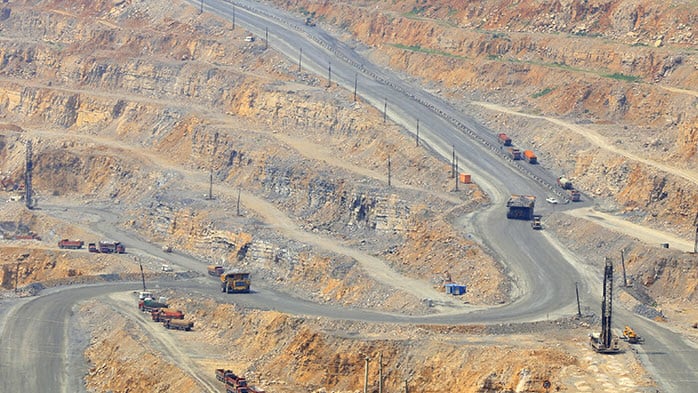CRU’s recent webinar, War in Ukraine: The Impact on Commodity Markets, received a huge response and interest from the audience. In this webinar, CRU experts from all major commodity areas joined CRU’s Head of Economics and an energy specialist to discuss markets following Russia’s invasion of Ukraine. The webinar offered a multi-commodity view of the short, medium, and long-term outlook on essential markets. If you missed watching it live, you can watch the recording here.
During the webinar, we received several questions from the audience on a variety of topics. Here are our answers to the top questions and themes from the webinar. Please get in touch with us if you would like to follow up on any points discussed in this Q&A summary.
What is the risk of demand destruction in the fertilizer market?
Fertilizer prices have reached new records, but agricultural commodity prices also continue to fly higher as global trade flows recalibrate following Russia’s invasion of Ukraine. Higher grain and oilseed prices should, in theory, bolster fertilizer demand. And despite higher costs across the agricultural supply chain, margins for farmers remain relatively robust. Nevertheless, high costs are creating a liquidity crunch and greater risk for farmers, and as a result, fertilizer application is set to be cut across the world. More importantly, the supply disruptions from the fall out of Russia’s invasion of Ukraine, sanctions on Belarus, and protectionist measures from key fertilizer exporters mean supply rationing will be prevalent through 2022 and 2023. We forecast nitrogen demand to fall 0.5% y/y in 2022, down 585,000 t – a urea equivalent of 1.3 million tonnes. Phosphate demand is forecast to fall 4.9% y/y in 2022. This is 2.4 Mt P2O5, equivalent to 5.2Mt of DAP. We forecast potash demand to fall 10.4% y/y in 2022. This is 4.2Mt K2O, equivalent to 7.1Mt of MOP.
Brazil is a major buyer of Russian fertilizers. What is the outlook for supply into this market?
Brazil is one of the most important agricultural producers and fertilizer importers globally. It is highly exposed to disruptions in trade from Russia. We continue to see nitrogen, phosphate and potash arriving into Brazil and other Latin American markets from Russia. Nevertheless, Brazil is looking to diversify its sourcing and is promoting its own domestic projects and actively looking elsewhere for supply. The Brazilian agriculture minister(s) have been on a global tour of fertilizer exporters seeking to sure up supply. Despite this, high prices and tight supply will lead to substantial demand cuts in Brazil over 2022 and 2023.
What are the implications of the war in Ukraine for the global nickel market?
Russia accounts for 7% of global nickel production but its share of the class 1 market is higher at 20%. To date, there has been no disruption to Russian exports but any disruption will impact European consumers the greatest in the short term. The class 1 market is tight and inventories are low so there is little alternative for European consumers near-term. We are expecting the market to be balanced this year but there are increasing risks to demand and supply.
What has the impact been on the copper and zinc markets?
Of all the base metals the war in Ukraine has had the biggest impact indirectly on the zinc market. Russian zinc exports are negligible but the resulting rise in the European gas price has impacted zinc smelters in the region. There has been closures and most European smelters are operating at reduced utilisation rates. This has meant a much tighter zinc market and higher prices and premiums.
As with nickel, there has been no disruption to copper exports from Russia. Although the country accounts for 4% of global production, any disruption will have a short-term impact on the price given inventories are low and supply chains are stretched.
What is the likelihood that Russia will ban exports of commodities to certain countries to retaliate against sanctions?
We think relatively low, at least in the short run. Energy exports are a huge source of revenue for Russia – both of foreign exchange and for the fiscal position. Additionally, restricting natural gas exports – which would hurt the EU the most – would cause technical difficulties for Gazprom. To avoid destabilising gas fields, they would have to continue pumping. It would be impossible to send very much of this gas to other customers, and Russia’s storage would be filled within a few months.
It is possible that Russia’s demand to be paid in rubles for natural gas is a precursor to cutting off supply. However, it is more likely this is a tactic to achieve re-negotiation of contracts with more favourable terms.
However, it is possible that Russia could restrict exports of other commodities which are a smaller share of its export earnings but which could cause substantial economic damage because of their role in global supply chains – for example, palladium. Please see our Insight Sanctions: Russia’s response, for more detail.
Any update on the expectations of the forward value-added aluminium product premiums? Are the high premiums expected to stay for longer?
As I am sure you can appreciate these are remarkably volatile and uncertain times make forecasts particularly difficult. We have not yet updated our value product premium forecast but will be doing so for our Aluminium Casthouse Shapes Market Outlook update later in May. However, in the meantime here are some thoughts.
Production costs have increased, mainly due to energy, and while they are likely to fall at some point, they are likely to remain at historically high levels for longer than we had expected. In a similar vein, and as you would appreciate, European smelter production is clearly also being impacted and restarts generally appear less likely given the state of the power market. Furthermore, it looks increasingly likely that Russia will have to cut some production and perhaps pause the ramp-up at Taishet. Finally, on the supply side, aluminium has been flowing from Russia into Europe and this is critical for VAP premiums. However, there are growing risks that sanctions may impede transport (and/or payment) which may make this impossible or at least infeasible.
I should note though, before I get too bullish, that there are clearly significant demand implications as well. This is for two reasons, first a general economic affect due to the war – not least from the consequences of higher inflation eating into consumer spending. Second, the automotive sector is hit by further production problems, particularly from a loss in Ukrainian production of wiring harnesses. All in all, we have lowered our demand projections by 500,000 tonnes globally since the war started.
EU anti-dumping duties on Chinese aluminum products.
I think this is wondering what will happen to the AD duties on Chinese aluminium products in light of the Ukraine war. This is an interesting and uncertain topic. When I have spoken with semi fabricators repeatedly, up until recently, metal was continuing to flow from Russia into Europe. While that continues, the AD on Chinese extrusions is likely to continue. Furthermore, the suspension on rolled products is likely to end as scheduled in July (although this is less certain than for extrusions). I think the war in Ukraine though does create a risk that this may change. The reason for this would be IF metal stops flowing from Russia to Europe due to sanctions then Europe will be struggling to source metal in sufficient quantities, whether of ingot, rolling slab or billet, etc. It is possible in this light that the European commission might change the rules in order to enable more availability/to avert too large an increase in conversion fees. This is speculative but, at least for rolled products, this does seem a plausible scenario.
Which are the alternative coal-supplying countries, if not Russia?
The EU announced a coal import ban from Russia starting in August 2022. For thermal coal, the EU imported 45 Mt from Russia in 2021, or 70% of all thermal coal imports. We forecast that the EU will still import 22 Mt of thermal coal from Russia this year before the ban comes into force. The replacement volumes will come primarily from Colombia and USA, as well as a little from South Africa, Indonesia, and Australia. More information is available in our Insight “EU to ban Russian coal imports – what are the alternatives?”.
What are your price expectations for coal?
We expect both thermal and metallurgical coal prices to remain very high or to see some further gains in the coming weeks, depending on the benchmark, but we forecast a significant downward correction through 2022 H2. This will be the result of the ramp-up in production from coal producers in Colombia and USA, as well as anticipated improvement in supply from Australia where producers were affected by particularly wet weather in Q1. Additionally, Chinese seaborne demand for both thermal and metallurgical coal is expected to be significantly lower y/y as domestic coal production there remains strong, meaning more seaborne supply will be available for the other regions. Overall, this reallocation of trade flows and higher production will put downward pressure on coal prices and they will start the return to fundamental cost-driven levels during 2022 H2 and 2023.
How will the supply gaps caused by the war get filled?
We discussed in the webinar that both Russia and Ukraine are key export suppliers of multiple products through the steelmaking value chain. The loss of this volume has therefore created supply gaps in the world market. The size of these gaps varies by product but there are particularly marked gaps in pig iron, HBI, slab and billet, and to some extent iron ore pellet. There is also a regional overlay to the gaps, but it is a reasonable generalisation to say that Europe is the market most affected.
These gaps can be filled by finding other import sources, increasing domestic production, consuming inventories, and delaying or destroying demand. All these dynamics are now playing out. For pig iron and semis, the supply gap is in truth a supply gap in the normal merchant market. There is no shortage of global production of these products, but under normal circumstances, most production is consumed internally and not traded. The market is now offering returns that are sufficiently attractive to incentivise new entrants to the merchant market.
As this process continues, we look to have reached a near-term peak in steel prices. For example, having increased by almost 50% since the outbreak of war, German HR coil prices have slipped back somewhat in the past couple of weeks. As solutions are found for the supply gaps, so “panic pricing” will dissipate.
















